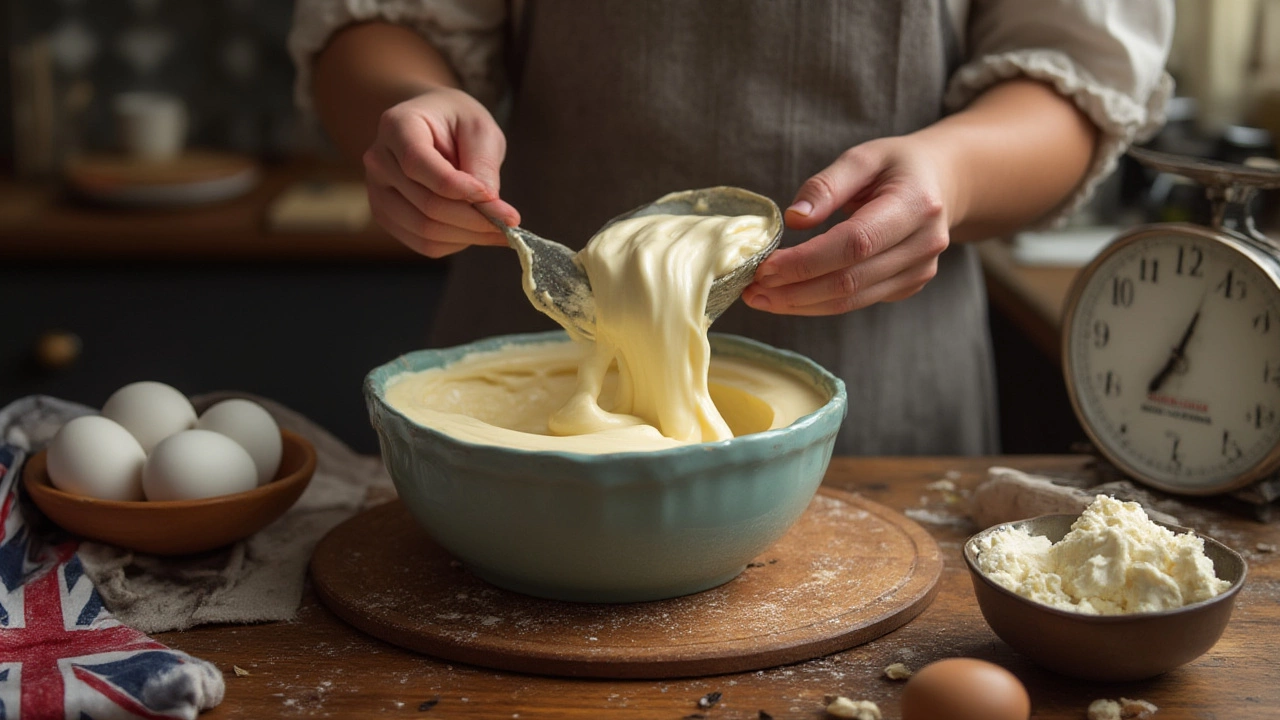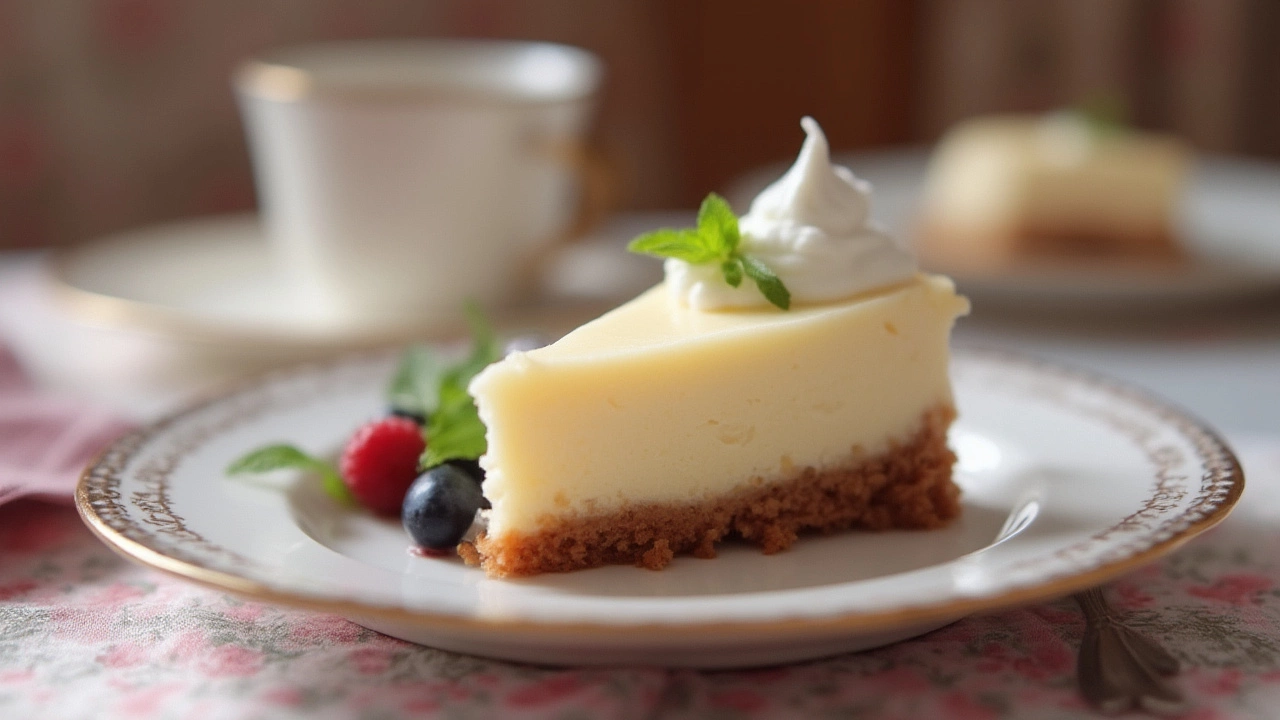
If you’ve ever tasted a cheesecake so creamy it almost melts on the tongue, you might have stumbled upon the magic of sour cream. It’s the little ingredient no one suspects—but it makes all the difference between grainy, heavy cheesecake and that smooth, sliceable dream you actually crave. It sounds simple enough, right? Just mix it in and boom, perfection. But there’s a bit more to the story. Why do so many recipes insist on sour cream? And once you know the reasons, can you ever go back?
The Science Behind Sour Cream in Cheesecake
Sour cream isn’t just tossed in for taste; it completely changes your cheesecake’s chemistry. Cream cheese is the backbone—rich, thick, and slightly tangy. But on its own, it can make your cake too dense, almost stodgy after baking. Sour cream steps in to lighten the load. It brings a higher water content than cream cheese and adds a dose of acidity. That means, as the cake bakes, the proteins in both cheeses tangle together more gently, with less risk of clumping. This is why cheesecakes with sour cream turn out silkier, with a more even crumb, instead of something rubbery or cracked.
The acidity in sour cream isn’t just good for texture. It also works as a flavour booster. That subtle tang, just a step up from cream cheese’s own notes, gives cheesecake a fresh, bright taste. Oxygen and time can sometimes flatten the flavours in dairy, but sour cream actually keeps things lively. Ever notice how cheesecakes with sour cream don’t taste as bland, even after sitting in the fridge for a while? That’s the acid talking. It resists staleness and keeps everything tasting sharper, longer.
If you’re worried about science, there’s something oddly simple here: sour cream is forgiving. If your mixture isn’t perfectly blended, or if you’ve accidentally overbaked your cake, the extra moisture from sour cream helps keep the finished texture more consistent. Marguerite Patten, who wrote about British baking for decades, noted that this trick works wonders alongside the unpredictable weather of a UK kitchen. One minute it’s humid and everything’s sticky, then suddenly the air dries out. With sour cream on your team, you don’t have to worry so much about cracks and crumbles.
Texture, Flavour, and the Role of Fat
What really separates an excellent cheesecake from just a decent one? Everyone points to texture first. Cheesecakes with just cream cheese can feel heavy, stodgy, almost too dense—some even finish a bit chalky. Adding sour cream, which has less fat and more water than cream cheese, lets the batter bake into something lighter and smoother. The theory is backed by what’s going on inside your oven. As the mixture cooks, moisture slowly releases, and the proteins from eggs and cheese set up into that custard you love. Add in sour cream and you get a softer, more uniform set because of all the extra water molecules swirling around, breaking up those protein bonds.
Now picture that first bite. A classic New York cheesecake (the ones you see piled high in deli counters, daring you to finish a whole slice) always boasts a little tang—the result of absolutely insisting on sour cream in the mix. Other styles, especially those from Europe, sometimes skip sour cream or use quark or ricotta instead. Those cakes tend to be drier, more crumbly, and a bit less rich. American bakers, on the other hand, love sour cream for how it helps bridge the gap between heavy and airy. That’s why those cheesecakes taste utterly different from their European cousins.
The amount you use matters too. Too much sour cream and things get runny, losing the cake’s structure. Too little and you barely notice the boost in texture or flavour. Most reliable recipes (like those from King Arthur Baking or America’s Test Kitchen) settle on roughly 1 cup of sour cream for every 900 grams of cream cheese. That ratio gives you the creamy, slightly tangy bite you crave without making things sloppy.
Fat content in sour cream can also swing the outcome. Standard sour cream clocks in at around 18% butterfat, while cream cheese can land anywhere from 25-33% in full-fat versions. If you use low-fat sour cream, you’ll lose some richness, though the texture might stay smooth. In contrast, extra-thick sour creams (like those special tubs from Eastern European delicatessens) can make your cheesecake downright decadent. It’s all about balancing what you like—extra creamy, or a bit lighter? Try both and see what wins your family over.

How to Incorporate Sour Cream for Perfect Cheesecake
So, how do you actually work sour cream into your cheesecake? It’s not just toss-and-go. There’s technique involved to get that lush result. Try bringing all your dairy to room temperature before mixing. This sounds fussy, but it makes blending smooth and prevents lumps. No one wants a chunk of cold cheese in their first bite, trust me. Mix your cream cheese well first, scraping down the sides, then whisk in the sour cream until the batter looks shiny and even. Add eggs last, one at a time, to keep everything light and airy.
Sour cream is a star both inside and on top of cheesecakes. Some bakers like to spread a sour cream layer over the baked, cooled cheesecake for extra tang and a smooth finish. Here’s how: mix sour cream with just a touch of sugar and vanilla, then smooth it over the cooled cake and bake briefly at a lower temperature (around 150°C or 300°F) just to set it. This seals in moisture and adds another dimension of flavour.
Worried about cracks? That sour cream layer acts as a cover-up for surface imperfections. It’s like getting to ice your mistakes—no one will know if your cake split a bit. Even professional bakers think of this as their insurance policy for picture-perfect cheesecakes. Want a flavour twist? Swap plain sour cream for lemon or orange zest-folded sour cream for an instant citrus upgrade.
One more tip: avoid over-mixing the batter once the sour cream is in. Overdoing it can whip too much air in, making the cake rise, then fall and crack. Your best bet is a gentle hand—just until everything’s blended. Pop the batter onto a pre-baked biscuit base (digestives are classic here in the UK) and bake gently, ideally with a pan of water in the oven to keep moisture high. The end result is a *cheesecake* (see what I did there?) you’ll want to make again and again.
Sour Cream Substitutes and Variations Around the World
Don’t have sour cream in your fridge? Plenty of bakers find themselves in this spot and start eyeing up yoghurt, crème fraîche, or even mascarpone. So, do these substitutions work? Greek yoghurt, especially full-fat, is the closest match in terms of acidity and moisture. Swap it one-for-one with sour cream and you’ll still get a tender crumb, though the flavour can be slightly sharper or more ‘yogurty’—kids in my house notice, but adults usually just take another bite. Crème fraîche is a bit richer and less tangy than sour cream but works just as well for texture. Just watch for extra-thick styles, as they can make the cake set even firmer, and might edge your cake closer to a French-style creamy tart.
But what about the cheesecakes you find outside the US and UK? Germany’s käsekuchen uses quark—imagine a cross between Greek yoghurt and farmer’s cheese. It bakes up lighter, with a fluffier texture and mildly tart taste. In Italy, ricotta cheesecakes are the go-to, with a more rustic feel and less density than a classic American cheesecake. These substitutes shape the cake’s final personality, turning your dessert into a reflection of the dairy traditions in each country. No one style is “right”—but sour cream became the American favorite because of how it bridges tang, creaminess, and that signature lushness.
If you’re thinking about making your cheesecake dairy-free, coconut yoghurt has been making the rounds in Bristol’s vegan cafes. It’s thick, tangy, and surprisingly creamy when paired with blended cashews and a squeeze of lemon. Just remember, most non-dairy substitutes will change both the texture and flavour, so test small batches if you want to nail that perfect creamy bite.
However you slice it (yes, pun intended), sour cream in cheesecake isn’t just a bonus ingredient. It’s the thing that takes a plain cream cheese dessert and transforms it into a showstopper. Next time you’re slicing into a homemade cheesecake, you’ll know exactly why every good recipe insists on that humble tub of sour cream—and why skipping it just means you’re missing out on the best part.